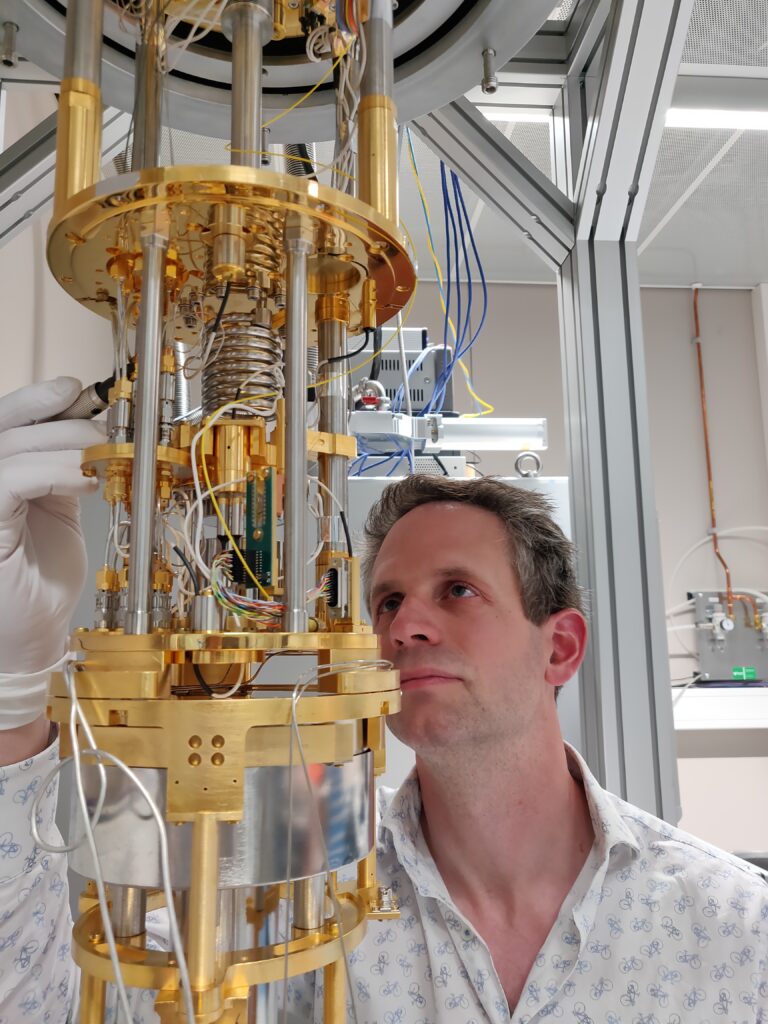SRON researcher Pieter de Visser has received an ENW-M1 grant from NWO to develop detectors that catch individual light particles from planets outside our solar system. Planets mainly emit low-energy light, such as infrared radiation, which is particularly difficult to detect. De Visser is developing his MKID detectors for infrared wavelengths with ESA’s candidate space mission LIFE in mind.
exoplanets
Detection of individual photons is not just a luxury when observing exoplanets. Exoplanets are so far away that it can take several seconds for a telescope to even catch one single particle of light. By comparison, your eye catches trillions of light particles per second from an average light bulb at a meter distance. Because MKIDs also measure the energy of each photon, in the end they provide the spectrum of an exoplanet. From that, we can deduce what substances are present in an atmosphere. The discovery of for example, oxygen, water or methane would be interesting in the search for extraterrestrial life.
candidate space mission LIFE
At SRON, De Visser is developing his detectors for mid-infrared wavelengths because of ESA’s candidate space mission LIFE. If it receives the green light, LIFE will be the first interferometer for exoplanets. Four coupled space telescopes will then jointly look at the same planet in the infrared. MKID is the only detection technology that measures enough photons at LIFE wavelengths to generate clear spectra of exoplanets. With other techniques, the noise is higher than the actual signal from the planet.
MKIDs
Microwave Kinetic Inductance Detectors, MKIDs for short, are based on superconductivity. Some materials lose their electrical resistance at temperatures near absolute zero. In that case most electrons form pairs, bypassing the material’s intrinsic resistance. An alternating current accelerates and decelerates electrons, which takes more effort for single electrons than for pairs. Physicists call this respectively high and low kinetic induction.
electron pairs break up
When a photon from an exoplanet hits a superconducting MKID, that energy rushes through the material like a cascade, breaking up thousands of electron pairs. A lower density of pairs means a higher kinetic induction. An MKID continuously measures the kinetic induction in its material, so an incident photon is immediately detected. The energy of that photon is determined by how much the kinetic induction suddenly increases.
NWO’s Open Competition ENW-M1 grant provides De Visser with a postdoc for three years plus support from a cleanroom engineer.



